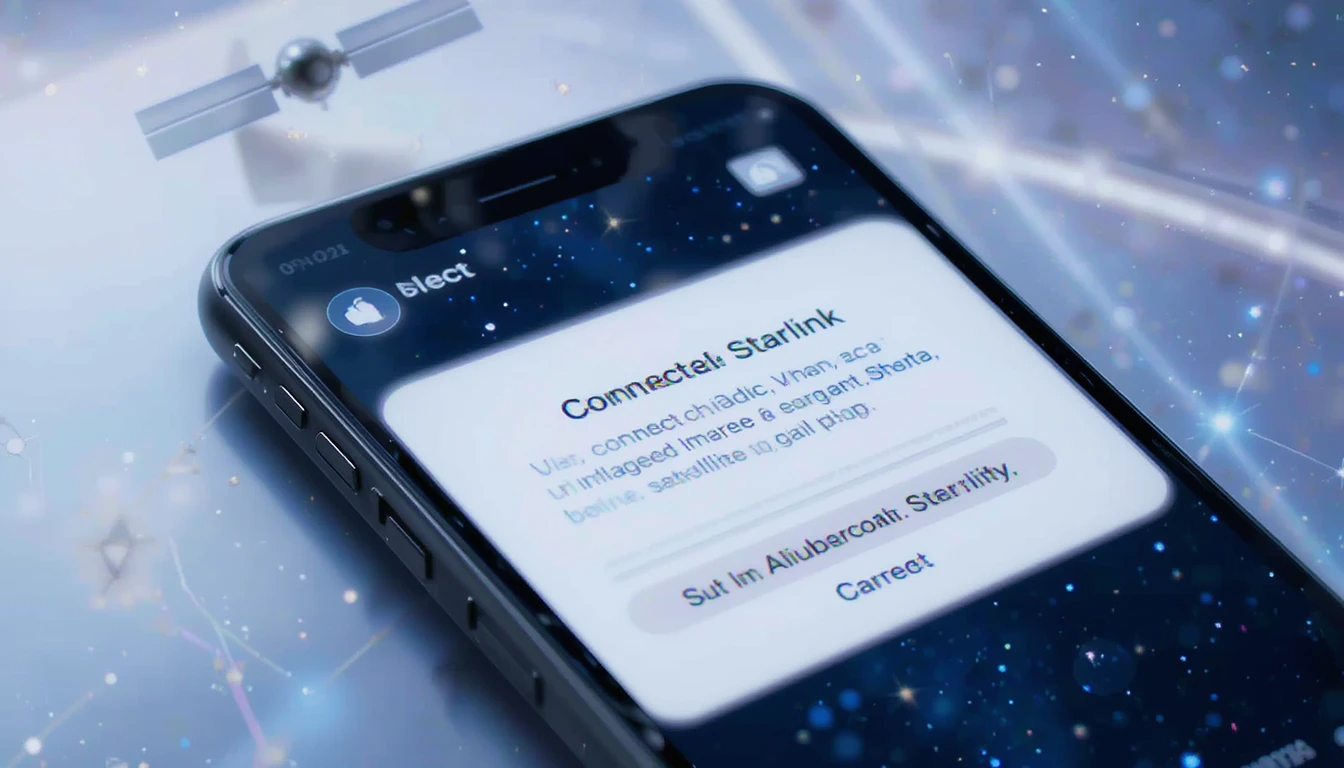The Future of Connectivity: A Game-Changing Partnership Imagine being able to send a message, access emergency services, or even browse the internet from the most remote corners of the world—without relying on traditional cell towers. That future is rapidly becoming a reality, thanks to an exciting new collaboration between Apple and SpaceX.
Starlink Satellite Connectivity to iPhones:
In a move that’s set to redefine global mobile communication, Apple has been working behind the scenes with SpaceX and T-Mobile to integrate Starlink satellite connectivity into iPhones. This partnership is expected to provide iPhone users with an alternative satellite-based communication service, enhancing their ability to stay connected no matter where they are.
Why Apple and SpaceX Are Joining Forces
Apple has long been interested in satellite connectivity. The introduction of the Emergency SOS via satellite feature in iPhone 14 demonstrated the company’s commitment to improving communication capabilities for users in isolated areas. However, Apple’s in-house satellite technology has its limitations, and expanding satellite services requires significant infrastructure and investment.
Enter SpaceX and its Starlink satellite network. Known for its ambitious goal of delivering high-speed internet to underserved and remote locations worldwide, Starlink has quickly become a leader in satellite communications. With a vast network of low-Earth orbit (LEO) satellites, SpaceX offers a robust and scalable solution that can complement Apple’s existing emergency satellite services.
By integrating Starlink into iPhones, Apple is ensuring that its devices can provide reliable connectivity anywhere on Earth, not just in areas covered by traditional cell towers.
How Starlink Will Enhance iPhone Connectivity
- Expanded Coverage: The Starlink network will allow iPhones to access satellite connectivity in areas where traditional cell towers are nonexistent, such as remote forests, deserts, oceans, and even in-flight scenarios.
- Improved Emergency Services: With stronger satellite integration, iPhone users will have a more reliable way to contact emergency services when they’re off the grid. This could be a lifesaver for hikers, travelers, and adventurers who find themselves in distress.
- Seamless Software Integration: Apple’s latest software update quietly rolled out support for Starlink’s technology. While the full capabilities of this update are still being explored, it indicates a significant step toward full satellite-enabled communication.
- T-Mobile’s Limited Beta Test: T-Mobile has already started rolling out a limited beta test for this offering, which means that a small number of users are currently experiencing what satellite-powered mobile connectivity feels like on their devices.
What This Means for Consumers
For the everyday iPhone user, the integration of Starlink represents a major leap forward in mobile communication. Imagine no longer losing service while driving through remote highways, trekking through mountains, or sailing far from the coastline. This technology has the potential to make dropped calls and dead zones a thing of the past.
Additionally, for people in developing countries or disaster-prone regions where traditional telecom infrastructure is weak, Starlink-backed iPhone connectivity could be a game-changer, providing an alternative means of accessing essential communication services.
Challenges and Future Prospects
While the collaboration between Apple, SpaceX, and T-Mobile is promising, there are still several hurdles to overcome:
- Cost and Affordability: Satellite communication is traditionally expensive. Will Apple and its partners find a way to make this service accessible and affordable to the average consumer?
- Regulatory Approvals: Expanding satellite connectivity requires navigating complex regulatory landscapes across different countries.
- Device Compatibility: Will older iPhones support Starlink connectivity, or will this be a feature limited to newer models?
- Bandwidth and Network Capacity: As more users start relying on satellite connectivity, will Starlink be able to handle the increased demand without significant speed reductions?
Despite these challenges, the trajectory of this partnership looks promising. As technology advances and infrastructure improves, satellite connectivity on smartphones could become as common as Wi-Fi or 5G.
Final Thoughts: The Dawn of a New Era in Mobile Connectivity
As T-Mobile’s beta testing progresses and more details emerge, we can expect this groundbreaking technology to become more refined and accessible. The dream of being connected anywhere in the world is closer than ever before.
For iPhone users, this means one thing: the future of communication is here, and it’s powered by the stars.
What are your thoughts on this development? Would you be interested in using Starlink on your iPhone? Share your thoughts in the comments below!


